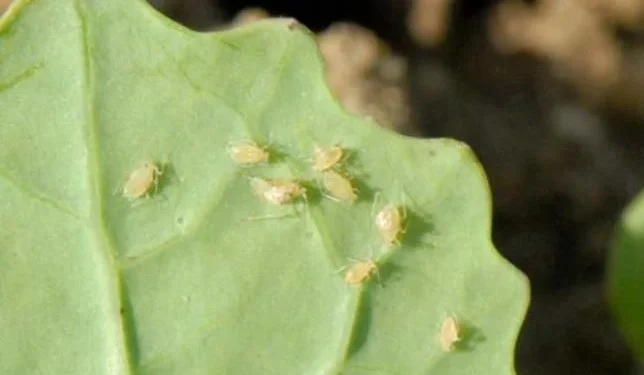Peach–potato aphid is the most important vector of Turnip yellows virus (TuYV), Potato leafroll virus (PLRV), Potato virus A (PVA) and Potato virus Y (PVY). It also transmits Cauliflower mosaic virus (CaMV), Beet yellows virus (BYV), Beet chlorosis virus (BChV) and Beet mild yellowing virus (BMYV).
The wingless peach–potato aphid is medium-sized (1–2 mm long) and ranges from pale green-to-pink or almost black. The winged form is a similar size but has a black central abdominal patch on the upper surface, with a pale underside.
Nov–Dec: Asexual females overwinter in brassicas, herbaceous crops and weeds. A small proportion of eggs overwinter on peach and nectarine trees. Cold weather reduces survival of mobile stages.
Mar–Aug: Adults migrate to and infest various summer crops, including potato. They can multiply extremely quickly, with populations usually peaking in early to mid-July. A further, smaller peak occasionally occurs in late August/September.
Sep–Dec: Adults infest oilseed rape and vegetable brassicas, transferring viruses.
Peach–potato aphid is resistant to several active ingredients (for example, neonicotinoids), and options for chemical control are limited. It is essential to follow resistance management guidance and to target chemical control carefully.
References: Fray, L.M., Leather, S.R., Powell, G., Slater, R., McIndoe, E. and Lind, R.J. (2014), Behavioural avoidance and enhanced dispersal in neonicotinoid-resistant Myzus persicae (Sulzer). Pest. Manag. Sci., 70: 88-96. https://doi.org/10.1002/ps.3530
Source: https://ahdb.org.uk/
Error




